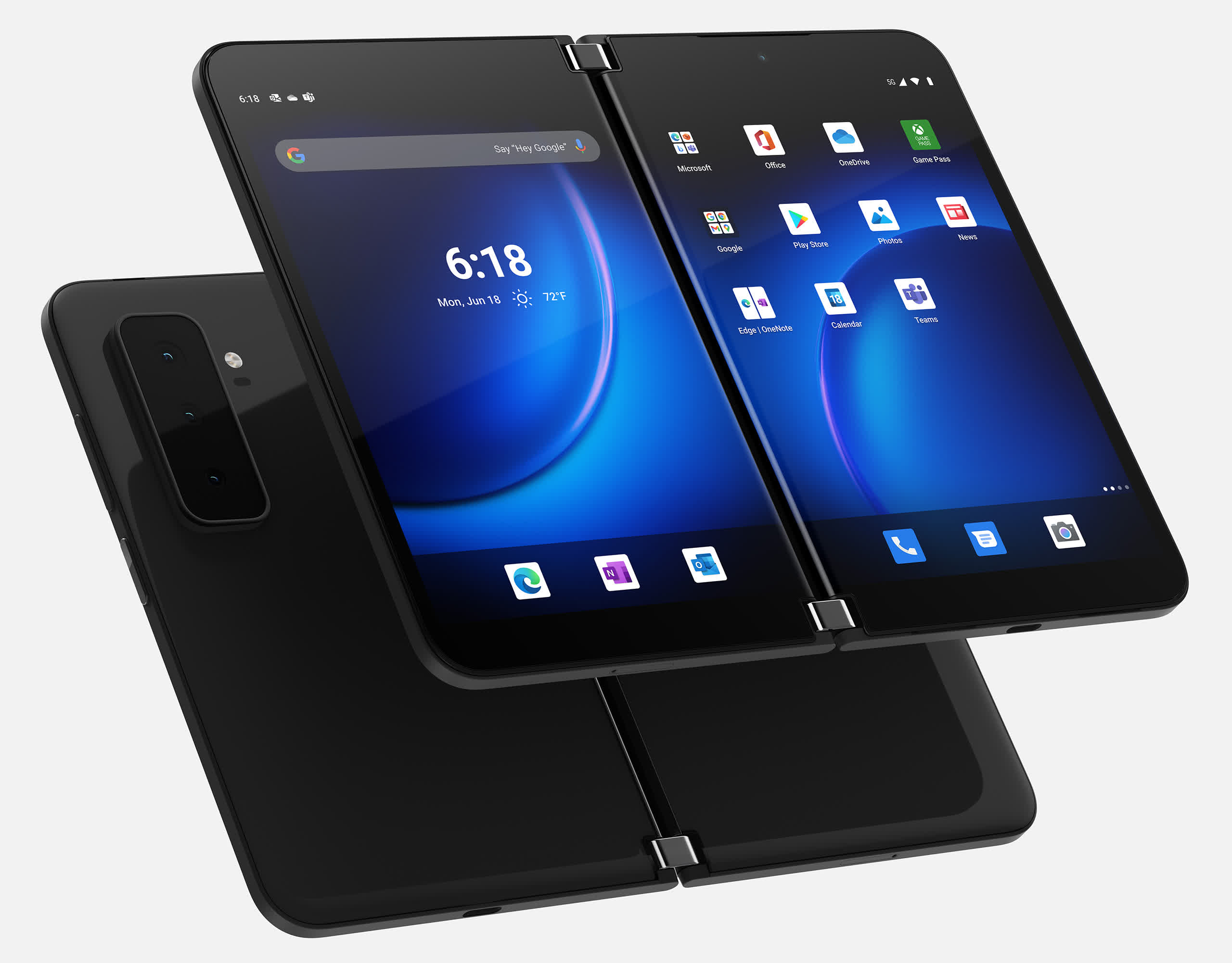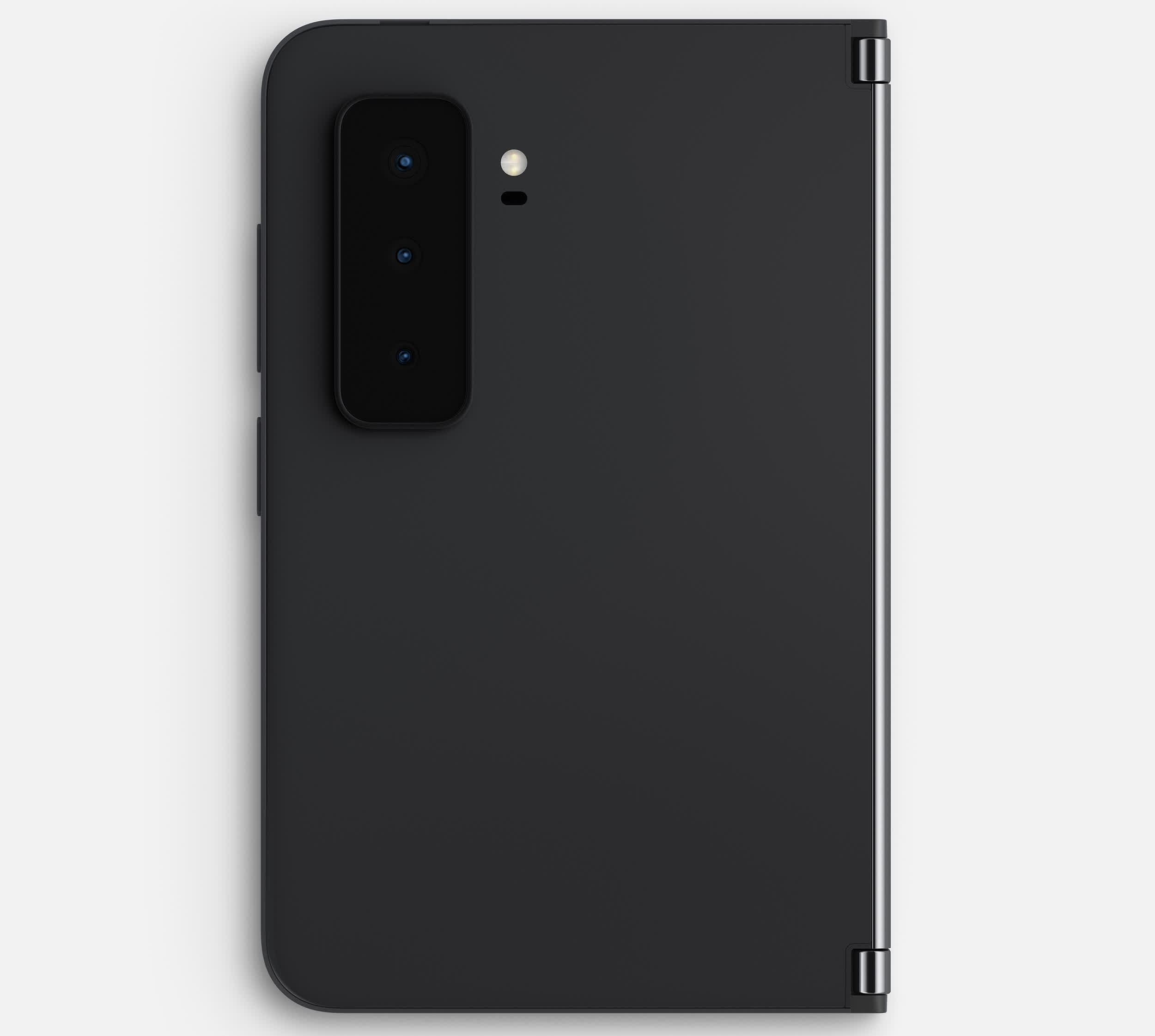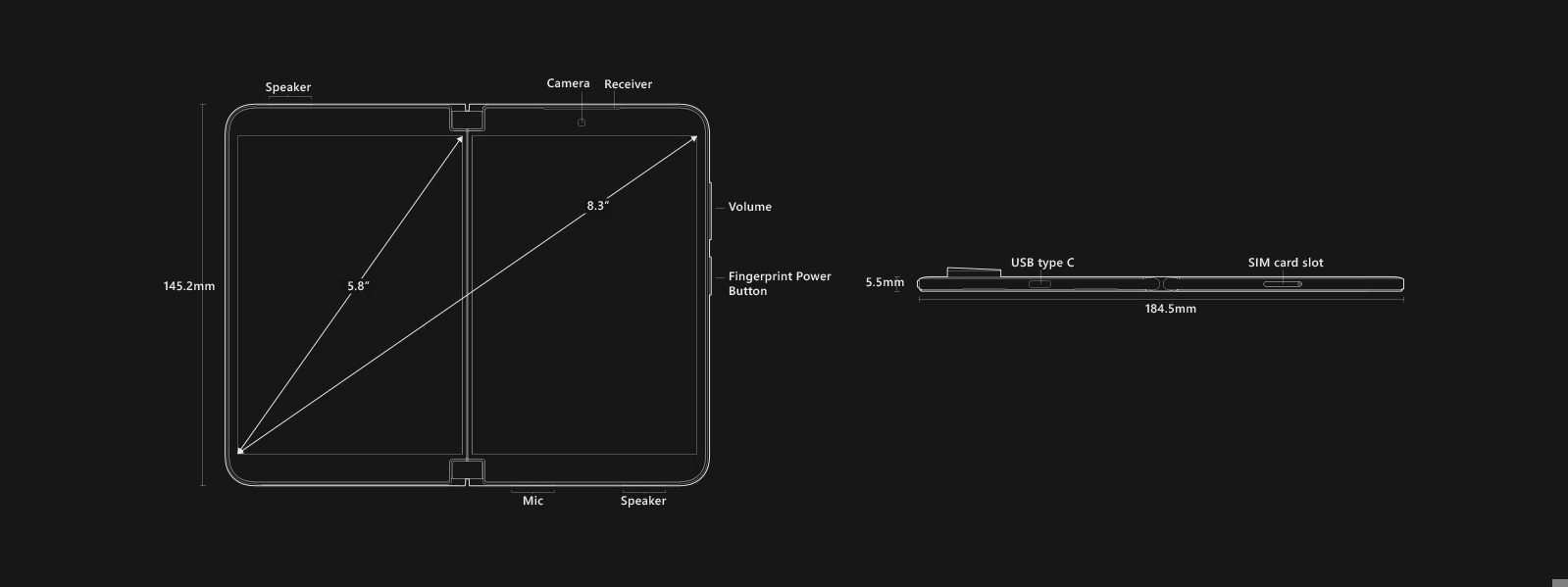Editor's take: Microsoft Surface Duo 2 is a bit of a double-edged sword. On one hand, it addresses many of the shortcomings associated with its predecessor, such as dated internal hardware and a lackluster camera system. On the other hand, it's even more expensive than the first-gen model, which was among the priciest handsets on the market when it debuted last year. That device saw a massive price cut just a few months after launch -- could the same happen this time around, too?

Microsoft introduced today its second-generation Surface Duo multi-screen smartphone.
The new Surface Duo 2 is Microsoft’s latest entry in the “foldable” category. Unlike traditional foldables, however, Microsoft isn’t using a single flexible display, but rather two standalone 5.8-inch AMOLED PixelSense touchscreen displays (1,344 x 1,892 resolution, 800 nits of brightness, 401 PPI each) that are much more durable than their plastic counterparts.
The Surface Duo 2 unfolds into an 8.3-inch display operating at a speedy 90Hz refresh rate, and both panels are coated with hardened Corning Gorilla Glass Victus, which has twice the scratch resistance compared to Gorilla Glass 6 . Unfolded, the panels measure just 5.5 inches thick, making it the thinnest 5G device on the market according to Microsoft.

Along the spine of the Android-powered device is a “glance bar” – an always-on section of the screen that displays helpful information like battery life and notifications.
Microsoft’s latest has received a significant upgrade in the camera department as well. The Surface Duo 2 features a triple rear-facing camera system comprised of a 12-megapixel, 27mm wide-angle camera with f/1.7 aperture and OIS, a 12-megapixel, 51mm telephoto camera with f/2.4 aperture, 2x optical zoom and OIS, and a 16-megapixel, 13mm ultra-wide shooter with f/2.2 aperture and a 110-degree field of view.
The front-facing camera, meanwhile, is a 12-megapixel, 24mm unit with f/2.0 aperture and dual-LED flash.

There’s more power under the hood, too, thanks to the inclusion of Qualcomm’s Snapdragon 888 5G SoC. The chip is accompanied by 8GB of LPDDR5 memory and your choice of 128GB, 256GB or 512GB of local storage. There’s no SD expansion port, so you’ll want to make sure and get a model with enough capacity to meet your needs, especially if you aren't hip to the idea of using cloud storage.
Other noteworthy amenities include a fingerprint reader with enterprise-grade security, USB-C 3.2 Gen 2 connectivity, stereo speakers, dual-band Wi-Fi 6 wireless connectivity, Bluetooth 5.1 and NFC. The phone does utilize magnets, and Microsoft warns that you'll want to be careful using it around objects like credit cards or parking passes that are sensitive to them.
Microsoft made no mention of water resistance, so you'll likely want to be careful when using the Surface Duo 2 near liquids.
Battery life is rated at up to 15.5 hours of local video playback, or up to 28 hours of talk time, from the 4449mAh dual battery. It’s also compatible with fast charging using the Surface 23W USB-C Power Supply, but Microsoft didn’t say how quickly it can recharge.
The Surface Duo 2 is offered in white or black color schemes and comes backed by a one-year warranty. It’s available to pre-order in select markets from today, starting at $1,499.99 with 128GB of RAM and scaling up to $1,799.99 for the 512GB model. Look for it to launch on October 20, 2021.
https://www.techspot.com/news/91374-microsoft-gets-right-second-time-around-surface-duo.html
